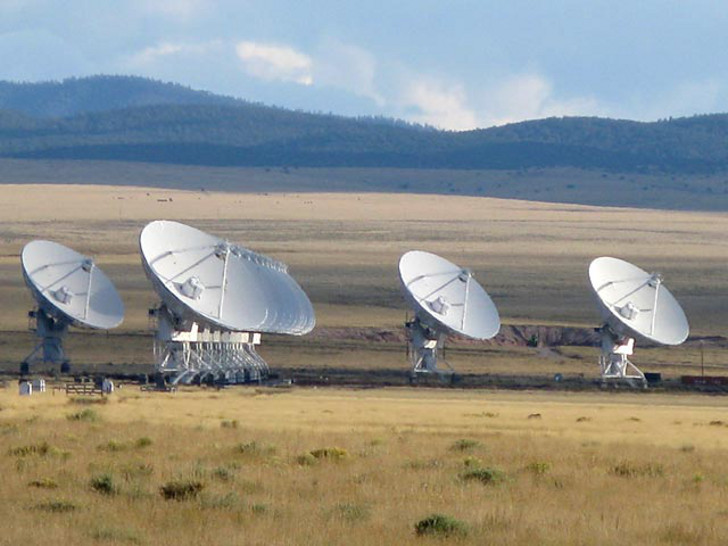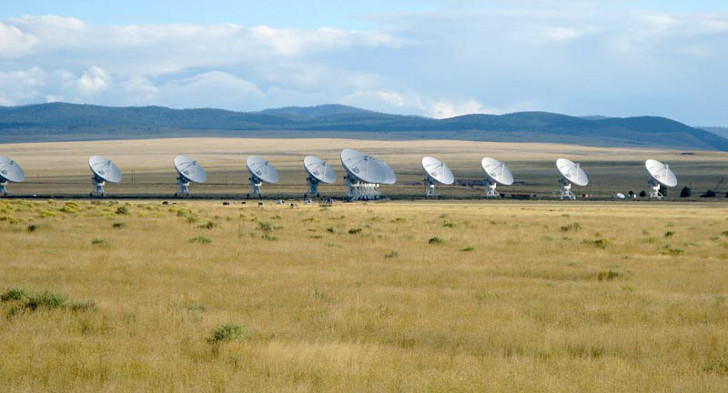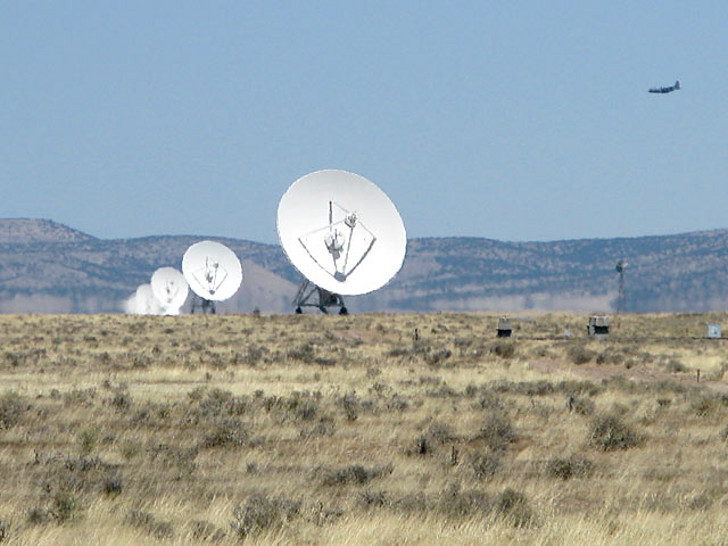Do you ever have those days when you want to escape in your RV to a galaxy far, far away? If so, then point your rig to New Mexico and head over to the Very Large Array. It’s a roadside attraction that’s too good to bypass when you’re anywhere near Albuquerque.
The Very Large Array roadside attraction is worth seeing.

If you ever saw the 1997 movie “Contact,” the VLA’s giant radio antennas will look familiar. That’s because the VLA is where the movie’s star, Jodie Foster, attempted long distance chats with aliens as part of her work with SETI (the Search for Extraterrestrial Intelligence). In real life however, the VLA has nothing to do with looking for space ships, it’s sole purpose is scientific stellar and galactic research.
Look for the Big Dishes on the Horizon
The Very Large Array is one of the few places in the world with this type of astronomical radio observatory technology. As you drive toward the VLA on Highway 60 you can see the giant dishes for miles. Pull over at the VLA roadside rest area and you’ll see 27 radio antennas in a Y-shaped configuration. The antennas are huge, each one measuring 25 meters (82 feet) in diameter. They’re so rugged they can withstand winds up to 200 mph, which you can easily envision happening on this flat desert land.
VLA configurations are always changing.

The VLA antennas can be operated in four different configurations, creatively named A, B, C, and D. These differ by the distance between the 27 individual antennas. Two large transporters ride on a double rail system to move the antennas into place and connect them to a network.
The resolution of the VLA is set by the size of the array. At the highest frequency (43 Ghz), the largest configuration will give a resolution of 0.04 arc-seconds: sufficient to see a golf ball held by a friend 100 miles away. The parabolic dishes concentrate radio signals collected into feed cones of varying sizes positioned at the center of the dish. The data from the antennas is combined electronically to give the resolution of an antenna 22 miles across, with the sensitivity of a dish 422 feet in diameter.
Is there anyone out there?

The VLA is funded by the National Science Foundation, and operates under an “Open Skies Policy,” making it open for use by astronomers, free of charge. Astronomers compete for use of the VLA with proposals judged on scientific merit. Winners are allowed use of the facility and its staff for four-month observation periods.
Drive by at different times during the year and you’ll notice the antennae are in different configurations, depending on who is using them. Better yet, stop by for the VLA’s twice yearly open house event in April and October to tour the facility and talk to on-site astronomers who can answer any question under the Sun!
Check out the VLA’s website for details.



